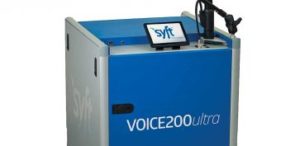Application Note ReView: AS185 – Vehicle Interior Air Quality (VIAQ) Analysis using SIFT-MS

With travel chaos at airports and train stations set to continue for the foreseeable future, many of us will be spending more time in the car than usual. Therefore, this edition of Application Note ReView takes a look back at AS185 – Analysis of Vehicle Interior Air Quality (VIAQ) Using SIFT-MS.
Vehicle interior air quality (VIAQ) has been of concern to both car manufacturers and the public for decades, along with the possible health impact of this “new car smell”. This has led to several countries imposing concentration limits on a range of volatile organic compounds (VOCs).
The current analytical methodologies are centred on either GC-MS or HPLC based technologies, which are relatively slow and can be expensive to run. They also suffer from potential discrimination of difficult compounds, such as small polar compounds like formaldehyde or acrolein.
Selected Ion Flow Tube Mass Spectrometry (SIFT-MS) is different as it is a form of direct mass spectrometry that uses precisely controlled soft ionisation to enable realtime, quantitative analysis of volatile organic compounds (VOCs) in air, typically at detection limits of parts-per-trillion level (by volume; pptv). This eliminates the need for sample preparation, pre-concentration and chromatography.
Syft Technologies SIFT-MS
This application note demonstrates the use of SIFT-MS to analyse the interior air quality of a vehicle over 5 hours of ambient heating in a carpark, followed by a continuous measurement of a 15 minute vent cycle. As well as demonstrating the ease of analysis that SIFT-MS offers, the final vent cycle shows some unusual behaviour that could be missed using the standard tube sampling chromatography methods.
Reagent ion selection: a microwave discharge through moist air forms the standard SIFT-MS positive and negative ions; H3O+ , NO+ , O2 + , OH- , O2 – , O- , NO2 – and NO3 – and these are then selected using a quadrupole mass filter.
Analyte ionization: the selected reagent ion is injected into the flow tube and excess energy is removed through collisions with the carrier gas (either nitrogen or helium). The sample is then introduced and an ion-molecule reaction takes place to form well-characterised product ions.
Analyte quantitation: product ions and unreacted reagent ions pass into a second quadrupole mass analyser and the analyte concentration is calculated as a ratio of product ions to reagent ions multipled by a rate constant, k, unique to that ion-molecule reaction. The use of eight, selectable reagent ions, coupled with a library of known reaction products and reaction rates enables SIFT-MS to quantify multiple analytes, in real-time, without the need for prior chromatographic separation.
A suite of 13 analytes were monitored, with a final air conditioning purge at the end of the analysis showing some unexpected concentration spikes.

This Applicaiton Note generates data indicating that SIFT-MS is a highly effective way to monitor car cabin VOC concentrations for VIAQ applications, even for difficult analytes, such as small oxygenated species like formaldehyde and acrolein.
Of particular interest is the ability of SIFT-MS to follow dynamic concentration changes in real-time, giving rise to the unexpected observations seen in the 15 minute vent cycle.
One possible explanation for the peak in concentrations seen, is that the vehicle ventilation system acts as a sink for these VOCs, which are then released when the air-conditioning is activated. It is worth noting that the usual sorbent tube and single point time-weighted average approach would not be an accurate representation of the behaviour seen here, potentially demonstrating the limitations of the current Thermal Desorption GC-MS approach to VIAQ measurements.
CONTACT US for more information or to discuss your analytical challenges
Application Note Author Bio

Mark Perkins, Senior Applications Chemist and SIFT-MS Specialist
“I joined Anatune in April 2015 in the role of Applications Chemist. I was formerly with TARRC where I was head of the Materials Characterisation Unit.
In my time at TAARC, I gained 12 years’ experience in polymer R&D, testing and analysis, having joined the company in 2002 as a Senior Analyst running the gas and liquid chromatography section.
I graduated from the University of Southampton with a BSc (Hons) degree in Chemistry in 1992, followed by a PhD in electrochemistry.
Here at Anatune, I am a Senior Applications Chemist and Product Specialist for our range of SIFT-MS products.”
**********************
Anatune Application Notes:
Anatune (and our partners) regularly produce Application Notes. These cover a wide and diverse range of methods, techniques, applications, and related chromatography technology. Our Application Notes provide detailed technical information, unique applications insight and method development & validation, as well as systems configuration innovations to ensure readers can further their knowledge in an engaging way. For many years, Anatune’s Application Notes have helped and supported analytical chemists in the fields of Gas Chromatography – GC, Liquid Chromatography – LC, and Mass Spectrometry – MS achieve to develop analytical solutions. Visit our Applications Note page to search for the insight you need in the following categories: Matrix, Technique, Analyte, Instruments, Product, Industry. Or alternatively, CONTACT US for more information or to put forward an Application Note subject and our Applications Team will be happy to support you in any way they can.
Previous post
PRODUCT FOCUS: Teledyne Tekmar Atomx XYZ Autosampler


